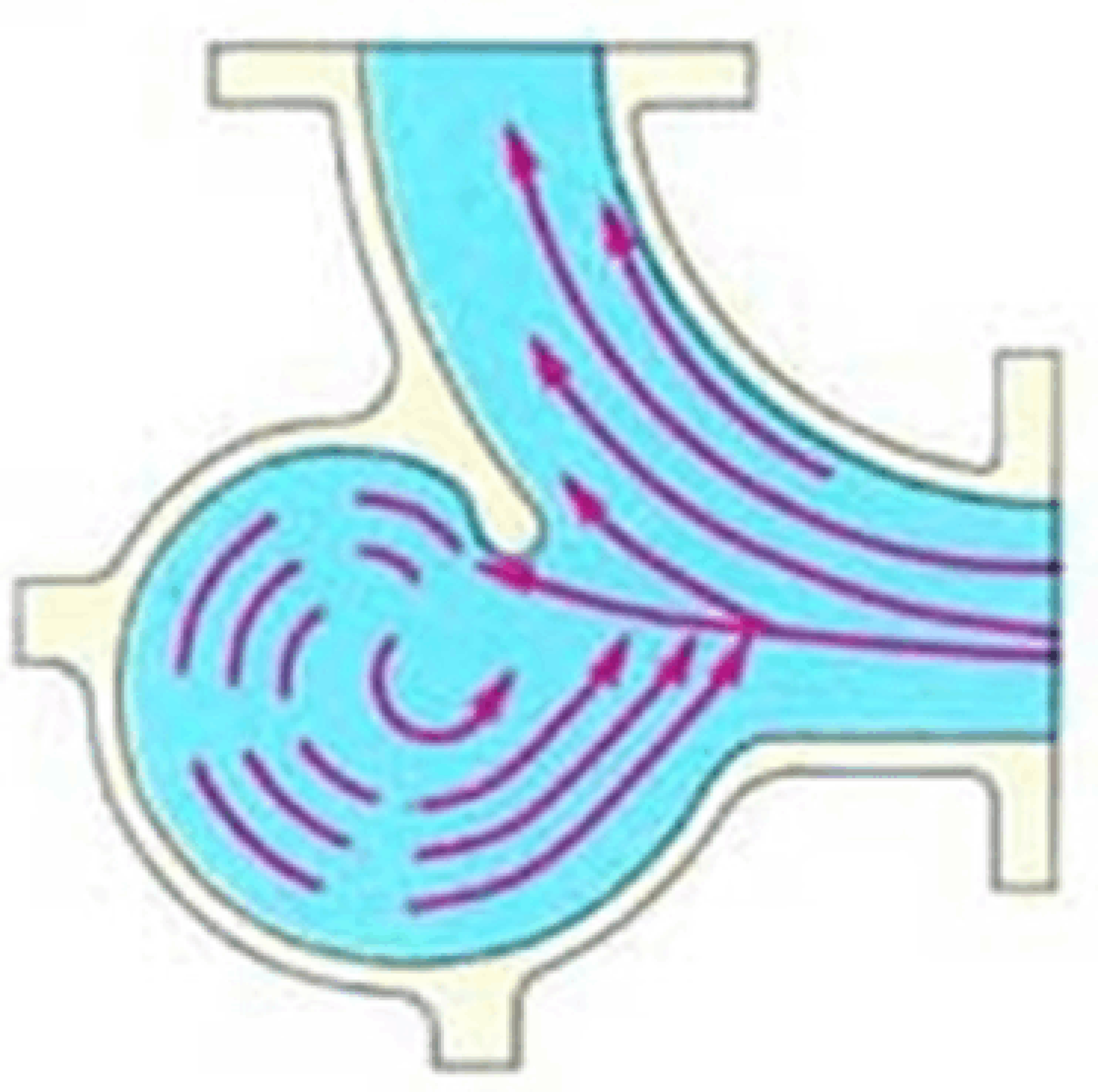Design Principle and Advantages of the Wear-Resistant Spiral Elbow
To effectively resolve these issues, the wear-resistant spiral elbow employs a specially designed spiral chamber that enables smooth material flow at the bend, preventing direct impact on the pipe wall and significantly reducing wear.
Design Principle
The core concept of the wear-resistant spiral elbow is to introduce a gradually expanding spiral chamber opposite the inlet. This allows some conveyed material to change direction along the outer wall towards the outlet while the majority of the material flows rapidly through the main conduit.
Based on Bernoulli’s principle (Q = A × V), when the cross-sectional area of the chamber increases, the flow velocity decreases, forming a region of relative pressure increase. Although the inlet pressure is higher than the outlet pressure, the transported material does not pass through a spiral pressure-increasing space, thereby avoiding collision-induced directional changes. As a result, the material can be discharged smoothly, preventing damage to both the elbow and the transported material.
Operating Mechanism:
Driven by the pressure difference, the transported material flows toward the elbow, with abrupt directional changes being suppressed. This reduces both wear and energy consumption. The design controls pressure and flow velocity to guide the material smoothly through bends, minimizing inner pipe wear, preventing pipe perforation, extending pipe life, and improving overall transport efficiency.
In the main flow path, the material flows at high speed before entering the chamber, creating a relative pressure drop. Inside the chamber, the flow slows down, resulting in a pressure increase that allows the material to smoothly re-enter the main flow path.
According to the fluid dynamics equation:

where Q is the flow rate, A is the cross-sectional area, and V is the flow velocity. As the cross-sectional area of the spiral chamber increases, velocity decreases, and pressure relatively increases. The lower velocity within the spiral chamber creates a positive pressure zone that reduces direct impact. Meanwhile, the higher velocity in the main conduit generates relative negative pressure, facilitating the smooth discharge of material from the chamber.
The pressure variations can be expressed as follows:
Assumptions:
- The flow velocity going directly to the outlet is V1 and the pressure is P1.
- The flow velocity at the upper inlet of the spiral chamber is V2 and the pressure is P2.
- The flow velocity at the lower inlet of the spiral chamber is V3 and the pressure is P3.
In this case: V1>V2>V3 ,P3>P2>P1
Since the flow velocity inside the spiral chamber is lower, maintaining a positive pressure zone, direct collisions are minimized, and material is smoothly discharged. Additionally, the lower inlet of the chamber is angled relative to the elbow entrance, utilizing pressure vectors to guide the conveyed material toward the outlet.
Advantages
- Reduced Wear: The design avoids sharp directional changes and direct impacts, significantly reducing elbow wear.
- Improved Conveying Efficiency:
- Minimizes turbulence, stabilizing flow velocity and increasing throughput.
- Eliminates the need for additional pressure boosting or secondary compressed air, reducing energy consumption.
- Suitable for Various Materials:
- Prevents melting issues in low-melting-point materials, preserving quality.
- Reduces clogging risks for powder and granular materials.
- Space and Cost Savings:
- Enables optimal pipeline configurations in limited spaces.
- More cost-effective to manufacture and install compared to large-radius elbows or T-junction designs.
Conclusion
The wear-resistant spiral elbow effectively addresses wear and flow reduction issues commonly associated with conventional elbows. Through its innovative fluid dynamics-based design, it enhances energy efficiency, improves conveying performance, and extends pipeline lifespan. However, when selecting this solution, initial design costs and applicability should be considered to ensure optimal operational benefits.
